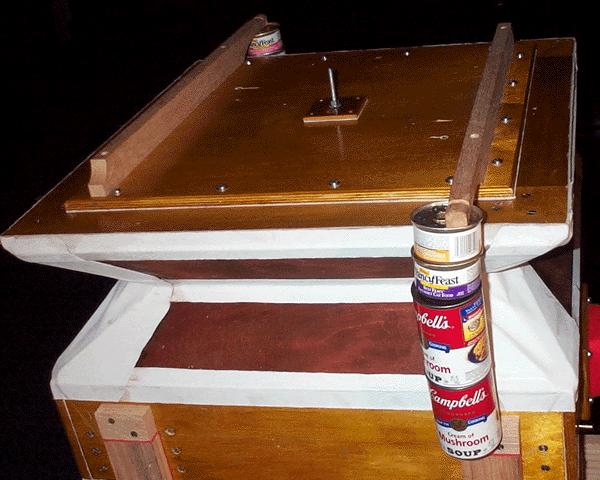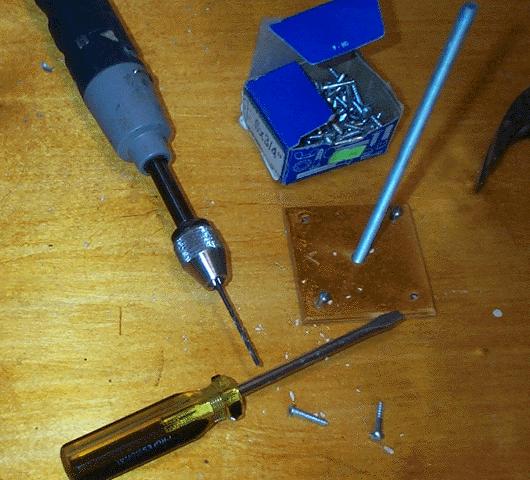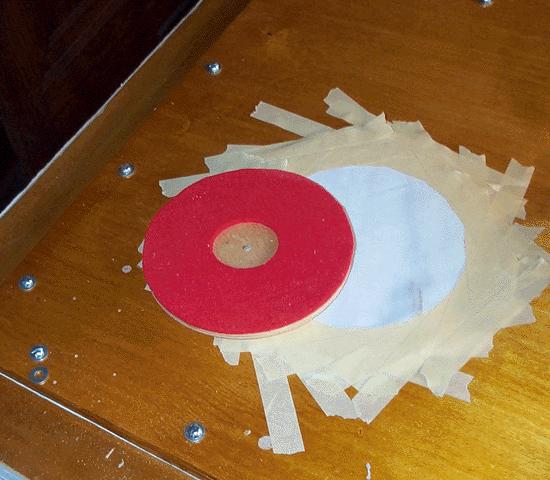
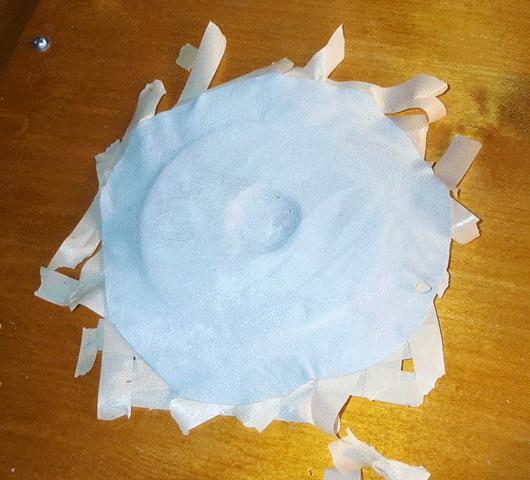
Chapter 20.2 - The Blower; Regulator Details
Here a few of the tricky details involved with building the regulator. The valve disk is a 5" diameter piece of 1/2" Finnish plywood, cut with a radial circle cutter. Make the first cut on the back of the wood, part way through with the blade set at 4-1/2", to taper the back edge. Cover the disk with 3/16" red felt. Using the disk as a pattern, mask around a 5" circle on the smooth side of a piece of valve kid, and glue the felt side of the disk down.


When that is dry, working a little at a time, stretch the edges of the leather up around the tapered back of the disk. Only hot glue sticks quickly enough to enable this to be done easily. When this dries, trim off the excess. For the guides, two big screw eyes are driven into the disk edges, and bushed as shown.
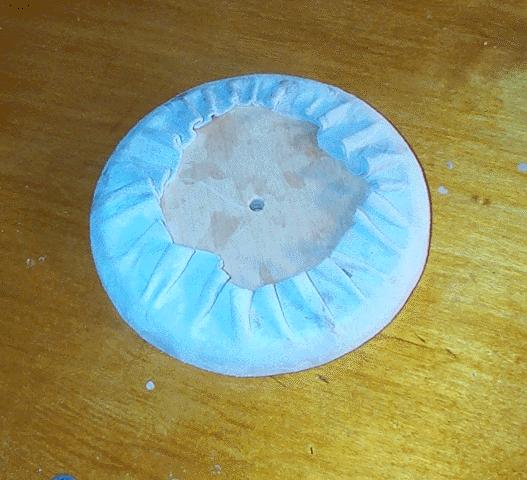
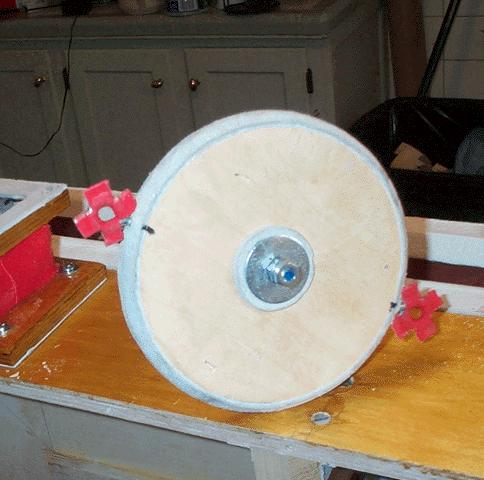
The disk actuating rod must be rigid, lengthwise, between the bellows lid and the disk. But, to allow a slight rocking play, the 1/4" Allthread rod is connected to the disk and the lid with washers and punchings of thick deerskin. This allows the disk to seat squarely against the hole, even if the bellows lid is not perfectly flat. So guide rods are used to keep the disk centered. Mark the rod positions. Using a hardwood block with a drill pressed 3/16" and 1/4" hole. This keeps the drill plumb for the 3/16" pilot holes. Make 1/4" rods, threaded 1/4-20 on one end, and flattened on the other. Using the other hole in the block, these are screwed plumb, into place.
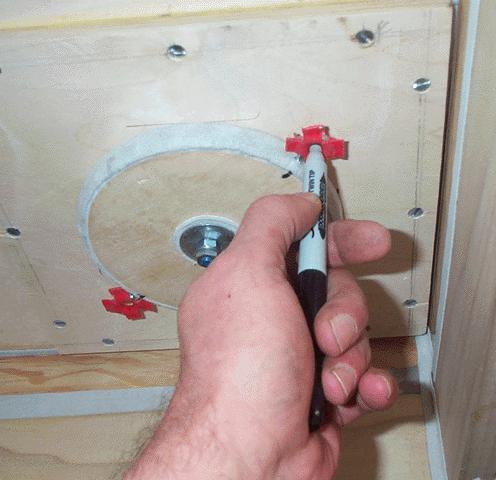
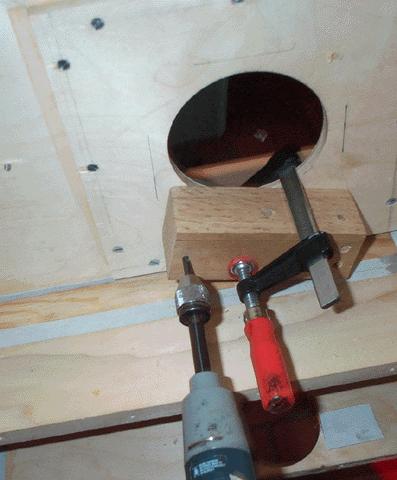
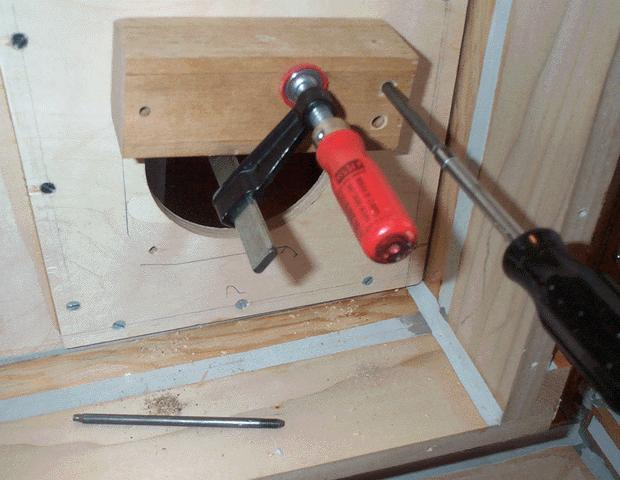
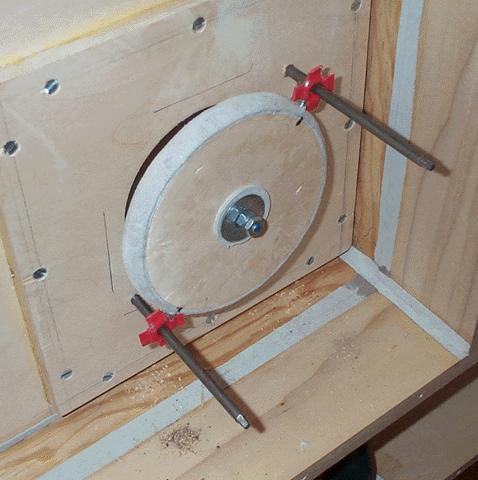
To make the balancing bellows, make a spacer that holds the bellows ends at the correct distance to fit loosely between the regulator floor and the bottom of the closed disk. It is covered with cambretta, or whatever you have. At final assembly this big holes allow one to hold the bellows bottom to the regulator bottom for screwing on. Later, a little piece of 1/4" plywood with the stability regulating hole (reamed to about 1/8" diameter during testing) is screwed on over the big opening.
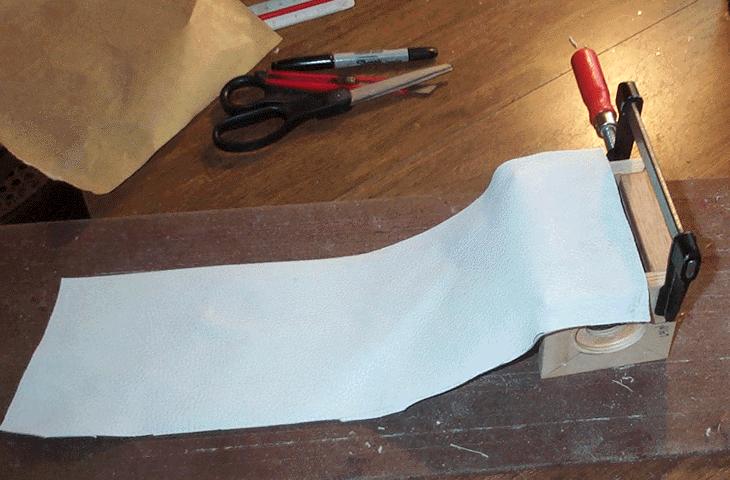
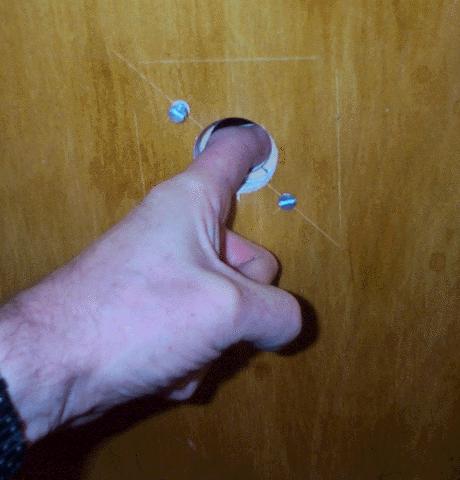
Here are some views of the two swinging check valve holders, that shut off the blower when using the organ pedals.
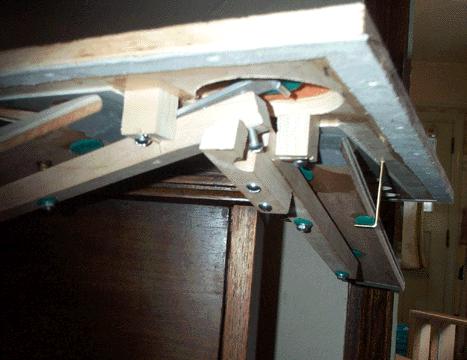
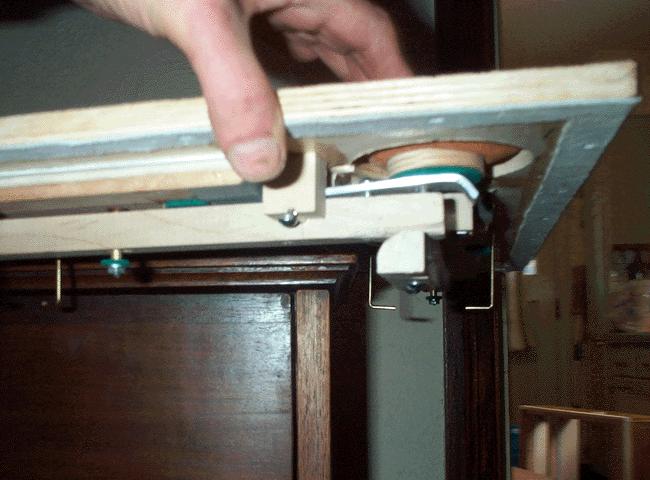
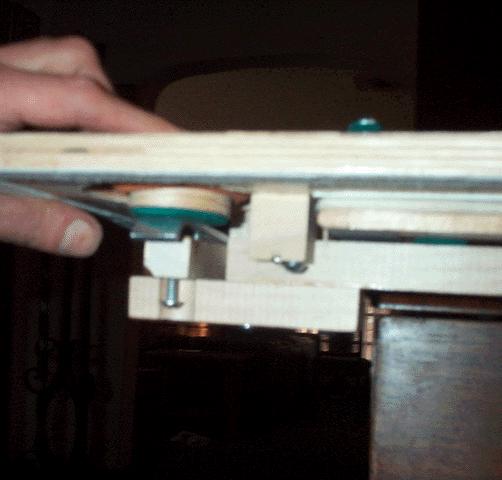
Looking down on the valve board; when the regulator bellows collapses, the aluminum bar is pushed down. Acting through a big isolating pouch, the end of the bar pushes the levers on the ends of the check valve plates, and lifts the plates into place. The underside of the bellows lid shows two adjustable studs, one pushes the aluminum bar, and the other just sits on the valve board; adjusted to hold the bellows lid level when collapsed.
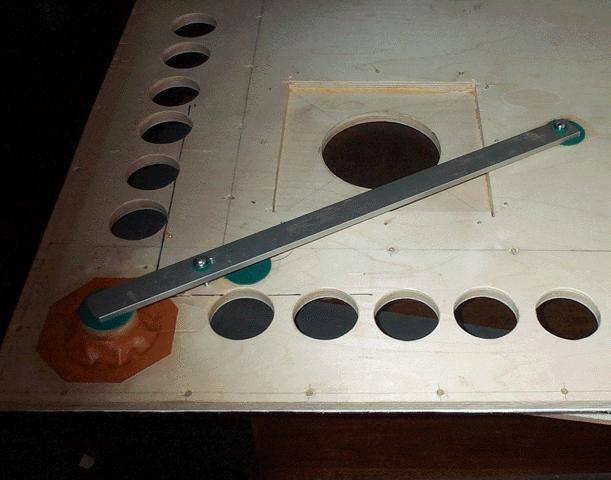
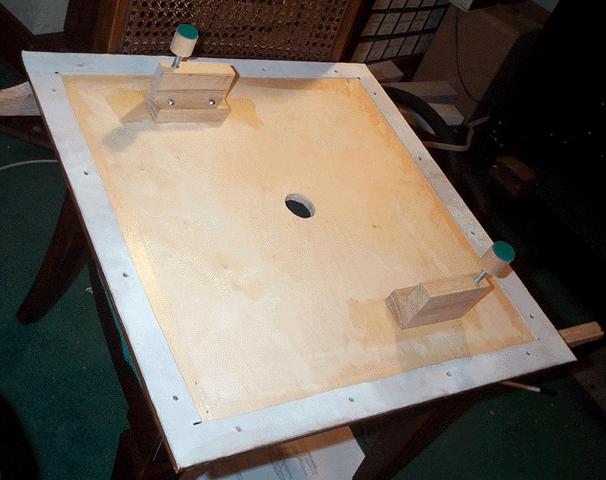
At final assembly, it is desirable to get the rod as plumb to the valve as possible. The bellows lid has a big hole in the center. The bellows is propped up to the correct height when the valve is closed; where the angle at the bellows fold is 90 degrees. A little square of plywood, with a 1/4" hole, is put around the rod, and the nuts, jam nuts, and washers are drawn up so the valve disk is tight under its seat. Then the square can be moved around a little, until the rod is straight up, and screwed down. Later, the square can be unscrewed and the bellows lowered, so that the nuts, jam nuts, and washers on the inside can be screwed up into place.
